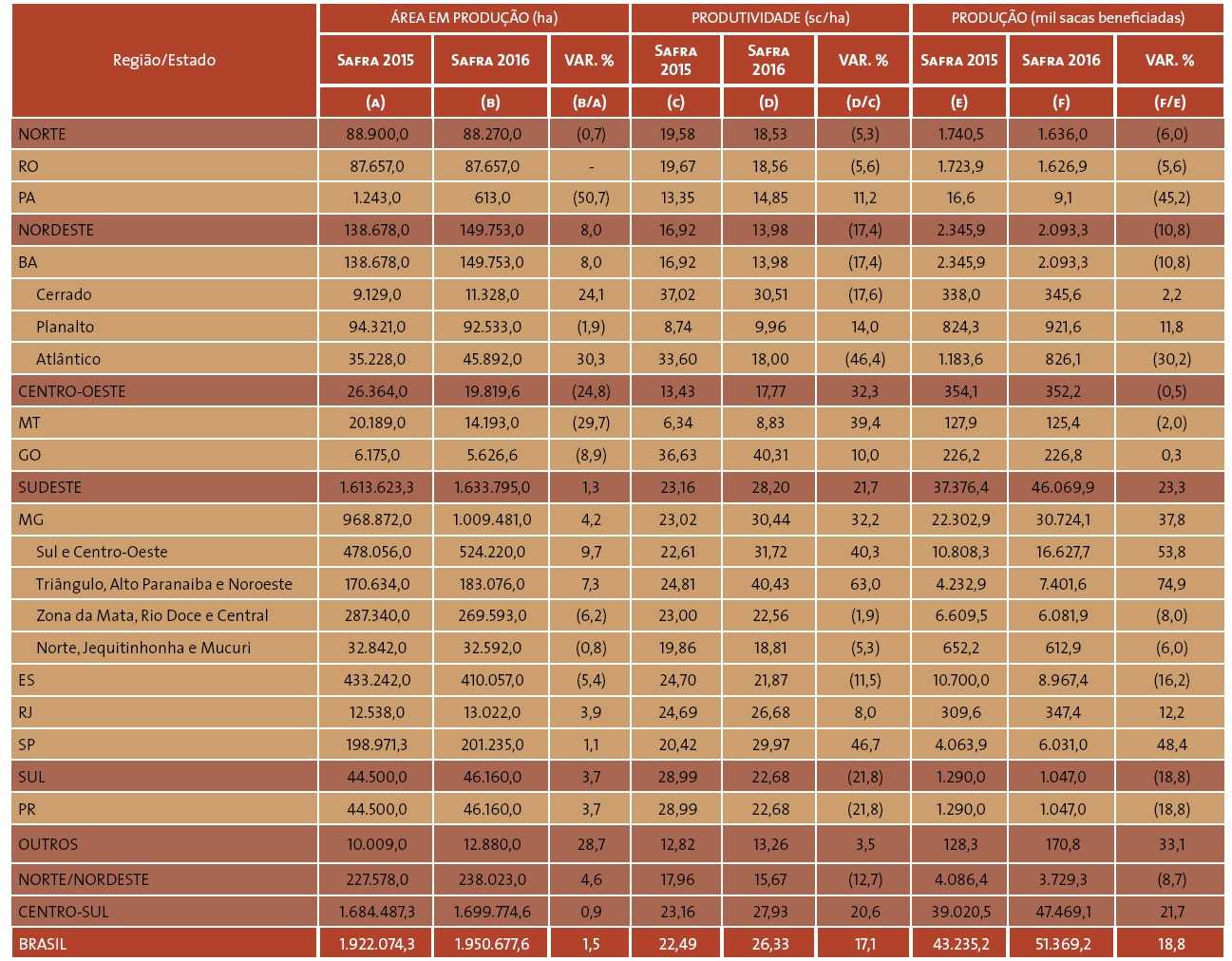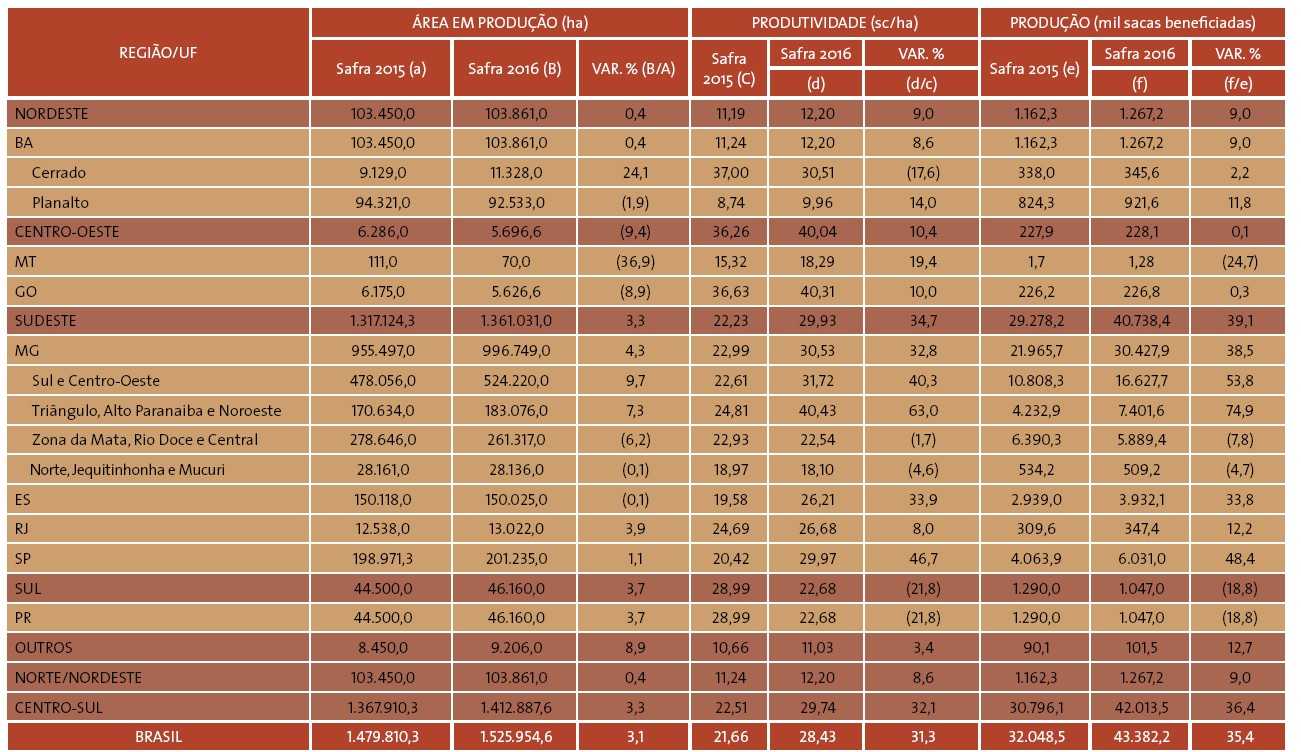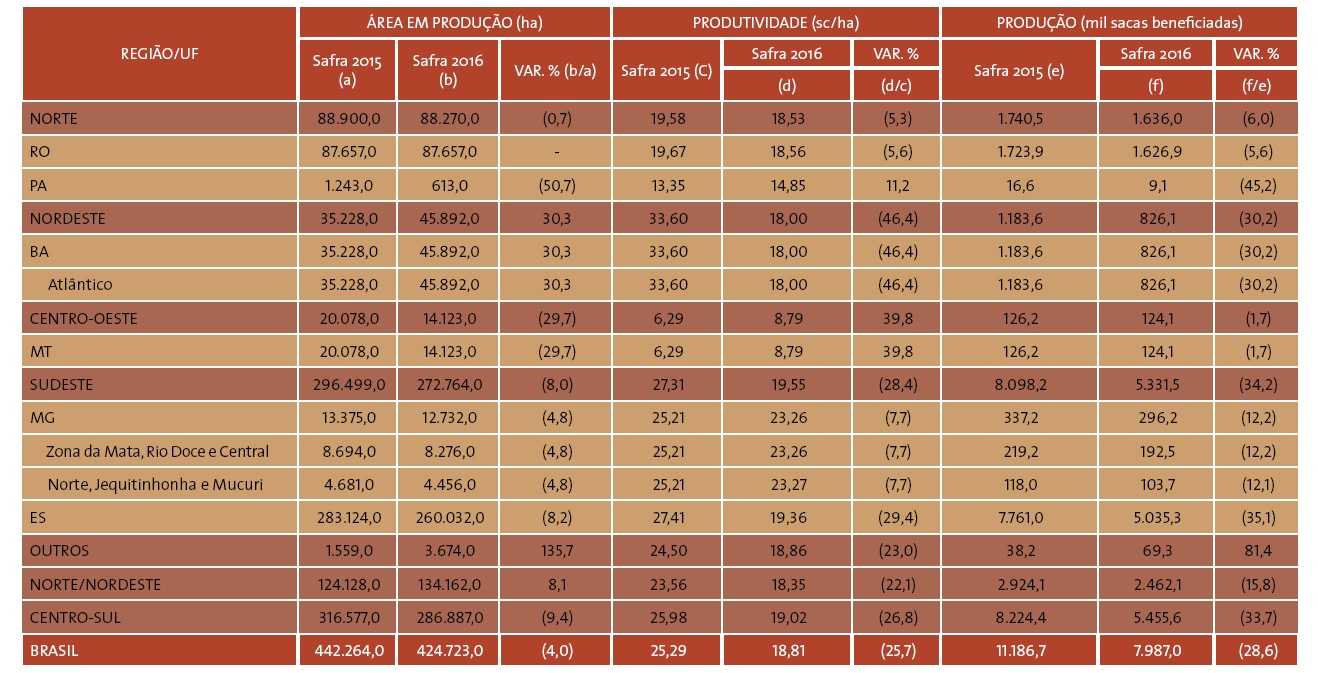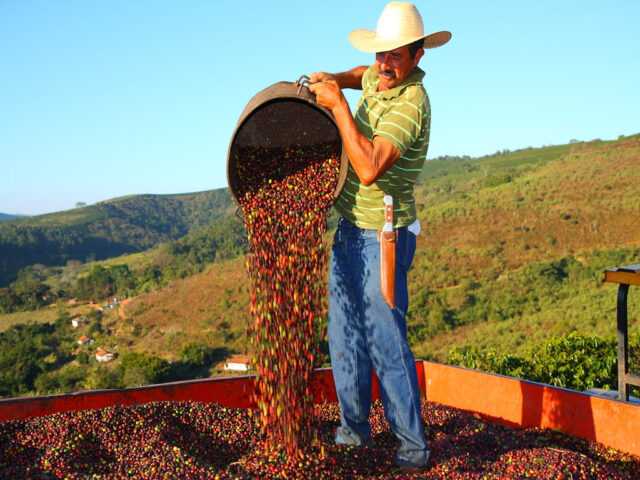Brazilian coffee production reached 51.37 million 60 kg bags in 2016/17, an increase of 18.8% over the previous cycle, when 43.24 million bags were obtained. The volume represents a historical record.
The largest harvest to date was recorded in 2014, with 50.8 million bags. The figures were released on December 22 by the National Supply Company (Conab), in its latest official survey of the current crop.
The total planted area in the country had a reduction of 1.1% in relation to 2015, totalling 2.22 million hectares.
However, there was productivity gain. The average of 26.33 bags/ha is 17.1% higher than the previous harvest.
The favourable climatic conditions in the main Arabica producing regions, coupled with an “on-year” in the biennial cycle, favoured crops and justify increased productivity in most states.
 The largest gains are observed in São Paulo, with 46.7%; Mato Grosso, with 39.4%; and Minas Gerais, with 32.2%.
The largest gains are observed in São Paulo, with 46.7%; Mato Grosso, with 39.4%; and Minas Gerais, with 32.2%.
 Arabica coffee represents 84.4% of total production, or a volume of 43.38 million bags. This is 35.4% higher than the previous harvest.
Arabica coffee represents 84.4% of total production, or a volume of 43.38 million bags. This is 35.4% higher than the previous harvest.
This was made possible by an increase of 46 thousand hectares of the area under production, including the incorporation of new areas that were in formation and renovation, in addition to more favourable climatic conditions.
 Robusta production is estimated at 7.98 million bags, or 15.6% of the total Brazilian coffee – a 28.6% decrease compared to the previous harvest.
Robusta production is estimated at 7.98 million bags, or 15.6% of the total Brazilian coffee – a 28.6% decrease compared to the previous harvest.
There was a 4% decrease in production area and serious climatic problems, such as drought and bad distribution of rainfall for two consecutive years in Espírito Santo, the largest conilon coffee producer in the country.
In Rondônia and Bahia, also producers of Robusta, there was drought in the critical phases of the plantations.
In Rondônia, however, the productivity decrease was softened by the entrance of new areas of clonal coffee, whose productivity is superior to the traditional ones.















